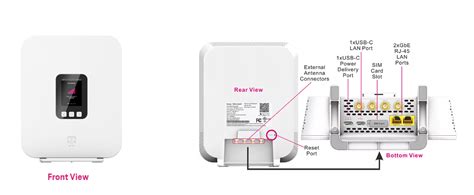T Mobile External Antenna Booster

For individuals seeking to enhance their T Mobile signal strength, particularly in areas with weak coverage, an external antenna booster can be a viable solution. These devices are designed to amplify the signal received from the nearest cell tower, providing a stronger and more reliable connection for voice, text, and data services. With a plethora of options available on the market, selecting the right external antenna booster for T Mobile requires careful consideration of several factors, including the type of antenna, the amplifier's gain, and the specific frequency bands supported by the device.
Key Points
- External antenna boosters can significantly improve T Mobile signal strength in areas with weak coverage.
- When choosing an external antenna booster, consider the type of antenna, amplifier gain, and supported frequency bands.
- T Mobile operates on multiple frequency bands, including Band 2 (1900 MHz), Band 4 (1700/2100 MHz), and Band 12 (700 MHz).
- Directly connecting the external antenna to the booster and ensuring a clear line of sight to the nearest cell tower can optimize performance.
- Regulatory compliance with FCC rules is essential when selecting and installing an external antenna booster.
Understanding T Mobile Frequency Bands

T Mobile utilizes a range of frequency bands to provide services, including Band 2 (1900 MHz), Band 4 (1700⁄2100 MHz), and Band 12 (700 MHz). An external antenna booster must be compatible with these frequency bands to effectively enhance signal strength. It’s also important to note that different devices may support different frequency bands, so it’s crucial to ensure the booster is compatible with your specific device.
Types of External Antennas
There are several types of external antennas available, including omnidirectional and directional antennas. Omnidirectional antennas provide a 360-degree coverage pattern, making them suitable for urban areas with multiple cell towers. Directional antennas, on the other hand, focus the signal in a specific direction, making them ideal for rural areas with a single cell tower. The choice of antenna type depends on the specific use case and environment.
| Frequency Band | Supported Devices |
|---|---|
| Band 2 (1900 MHz) | Most T Mobile devices, including smartphones and tablets |
| Band 4 (1700/2100 MHz) | Higher-end T Mobile devices, including 4G LTE smartphones |
| Band 12 (700 MHz) | Some T Mobile devices, including those supporting 4G LTE on Band 12 |

Installation and Optimization

Proper installation and optimization of the external antenna booster are crucial to achieving the best possible results. This includes directly connecting the external antenna to the booster, ensuring a clear line of sight to the nearest cell tower, and positioning the antenna to minimize interference from surrounding structures. It’s also essential to follow the manufacturer’s instructions and comply with regulatory requirements, such as those set by the FCC.
Regulatory Compliance
The FCC requires that all external antenna boosters comply with specific regulations, including those related to signal strength and frequency bands. It’s essential to ensure that the chosen booster meets these requirements to avoid any potential issues or penalties. Additionally, some boosters may require registration with the FCC or T Mobile, so it’s crucial to check the specific requirements before installation.
What is the difference between an omnidirectional and directional antenna?
+An omnidirectional antenna provides a 360-degree coverage pattern, making it suitable for urban areas with multiple cell towers. A directional antenna, on the other hand, focuses the signal in a specific direction, making it ideal for rural areas with a single cell tower.
Do I need to register my external antenna booster with the FCC or T Mobile?
+Some external antenna boosters may require registration with the FCC or T Mobile, so it's essential to check the specific requirements before installation. Failure to comply with regulatory requirements can result in penalties or issues with your service.
How do I optimize the performance of my external antenna booster?
+Optimizing the performance of your external antenna booster involves directly connecting the external antenna to the booster, ensuring a clear line of sight to the nearest cell tower, and positioning the antenna to minimize interference from surrounding structures. It's also essential to follow the manufacturer's instructions and comply with regulatory requirements.
In conclusion, an external antenna booster can be an effective solution for improving T Mobile signal strength in areas with weak coverage. By understanding the different types of antennas, frequency bands, and regulatory requirements, individuals can select the right booster for their specific needs and optimize its performance to achieve the best possible results. Whether you’re in a rural or urban area, an external antenna booster can provide a stronger and more reliable connection for voice, text, and data services, making it an essential tool for staying connected in today’s digital world.



